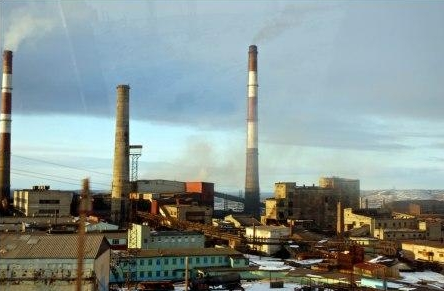
Will the new von der Leyen Commission deliver on climate policy?
Yesterday, during its first plenary session, the newly elected European Parliament confirmed Ursula von der Leyen as President of the European Commis...
News

Publish date: November 21, 2016
News
MURMANSK –The notoriously polluting Kola Mining and Metallurgy Combine (KMMC) has said it plans to reduce annual emissions of sulfur dioxide by nearly half within two years, it’s parent company told Bellona.
A source of tension between Norway and Russia since the fall of the Soviet Union, the KMMC – a daughter company of the giant Norilsk Nickel based in Northern Siberia – yearly emits some 80,000 tons of the heavy metal, much of which finds its way into northern Norway.
Norilsk Nickel itself announced last week that it would slash emissions in its hometown – the most polluted city in Russia – by as much as 75 percent by 2020.
Yury Yushin, who heads the Norilsk Nickel’s department of cooperative programs told Bellona that the company intends to reduce its emissions to 44,000 tons a year by 2019. He didn’t, however, discuss any specifics behind the dramatic reduction.
But the fact that a major polluter in both Northwest Russia and Northern Siberia is announcing such major pollution slashes – while it’s not clear how they will achieve them – has encouraged Bellona.
The bulk of emissions from the KMMC originate from its facilities in the Kola Peninsula industrial cities of Zapolyarny and Nikel. Higher than safe emissions of sulfur dioxide into the atmosphere around and adjoining the Kola Peninsula have for 25 years been a sore spot between Norway and Russia.
Yushin told Bellona the KMMC has managed to solve problem high emissions from Zapolyarny without raising them in Nikel.
Alexander Tyukin, the KMMC’s head of science and technical development and environmental safety, told Bellona that funding to reduce polluting emissions would be come from a variety of investment programs.
The most cited source of pollution at the KMMC, said Tyukin, is its briquetting workshop in Zapolyarny.
“The construction and launch of this installation allowed us to reduce emissions of sulfur dioxide by 35,000 tons a year,” Tyukin said. “This is a serious and very significant environmental effect.”
He underscored that solving emissions problems in Zapolyarny allowed the company to forgo raising emissions in Nikel
According to company represenatives, sulfur dioxide emissions from Nikel 2015 amounted to 79,980 tons in 2015; emissions from Zapolyarny came to 40,000 tons, and emissions from its third facility in Monchegorsk amounted to 37,000 tons.
These amounts, however, represent an increase over 2014 sulfur dioxide emission figures.
Yushin told Bellona that closing the closure of a nickel factory in Norilsk in Northern Siberia liquidated a source of some 370,000 tons of sulfur dioxide.
“The factory was built in 1942. It even looked monstrous,” Yushin told Bellona. “Production was closed because working that way was no longer feasible.”
Yet, the smelting workshop in Nikel looks just as monstrous and was built even earlier, in 1940.
Nickel Refining to move to Monchegorsk
In conjunction with the factory closure in Norilsk, nickel production will move along different lines. Its refining will move to Monchegorsk not far from the Norwegian border. It will be processed at the Nadezhda Metallurgy Factory in Norilsk.
“Emissions in Monchegorsk will not go up because final nickel production will be facilitated with different technology,” said Yushin.
A facility will also be built to cleanse salt runoff from nickel production before it’s dumped in water sources. Yushin said salt would be boiled out of water and returned to further nickel production. The cost of that project, he said, would be 1.5 billion rubles ($23.4 million).
Yelena Bezdenezhnikh, Norilsk Nickel’s vice president, said in a release (in Russian) that the company was planning to invest 27.7 billion rubles ($432.6 million) in the KMMC between 2017 and 2018.
She said the funding would be “directed to realizing strategic projects for company development, boosting its economic and environmental effectiveness, and renewing technology and equipment.”
The developments have encouraged environmentalists, though they hope the announcements don’t just remain on paper.
“This is good news for the environment in the region because today’s emissions from the KMMC are unacceptable,” said Oskar Njaa, an advisor in Bellona’s Russian group. “Bellona supports the KMMC’s intention to lessen its negative effect on the environment and is ready to offer help and cooperation to make the Arctic cleaner.”

Yesterday, during its first plenary session, the newly elected European Parliament confirmed Ursula von der Leyen as President of the European Commis...

From July 1st, 2024, to December 31st, 2024, Hungary is holding the Presidency of the Council of the European Union (EU), following Belgium’s tenure....

In October 2023, Bellona Europa announced a new FedEx-backed initiative Ports2Decarb – a project aiming to maximise the role of European sea and rive...

Bellona, together with other 29 members of the industrial carbon management community and umbrella organisations, express its support to the inclusio...
Get our latest news